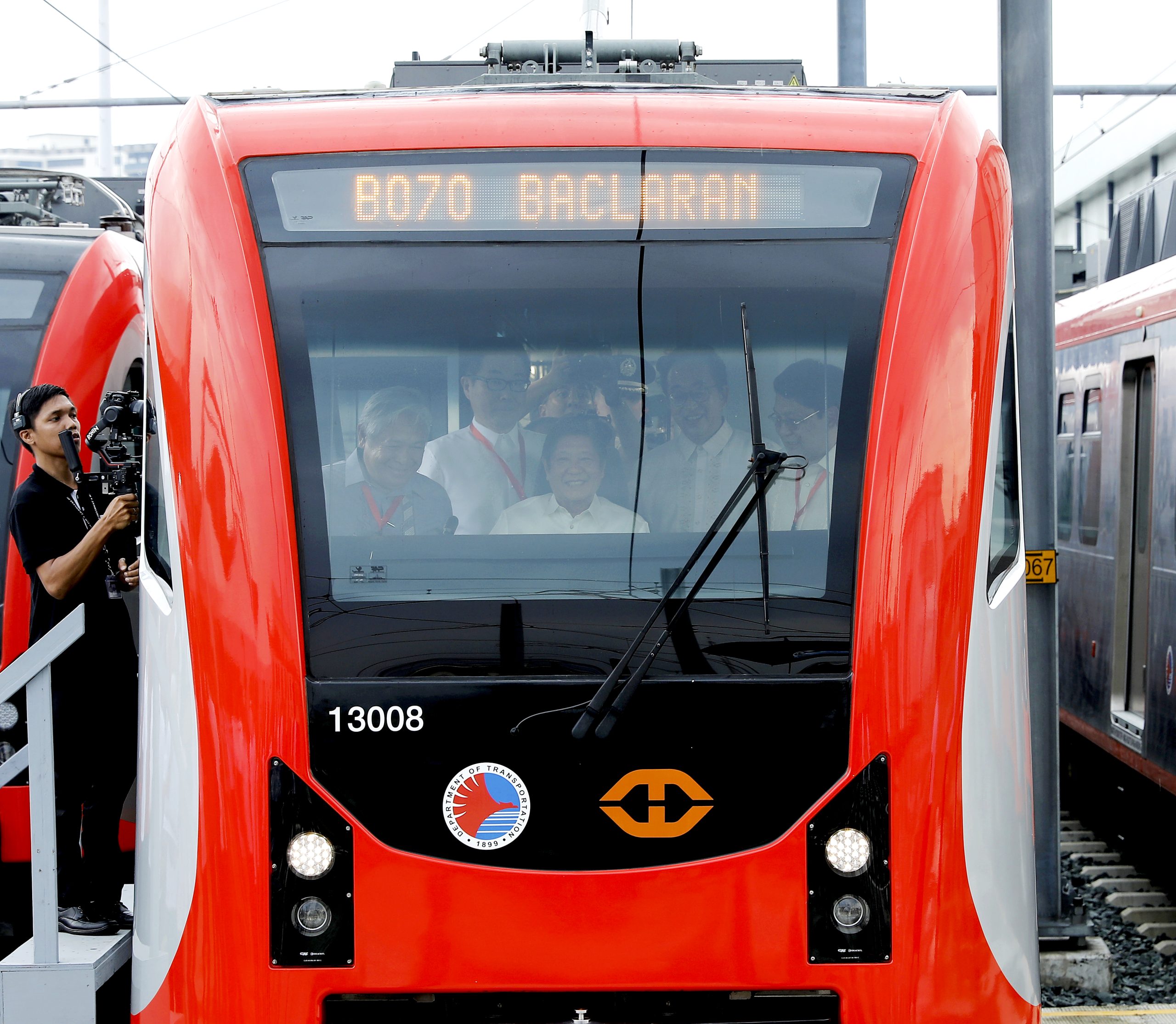News
PBBM: Transport projects to drive economic efficiency

FILE: INSPECTION. President Ferdinand R. Marcos Jr. (middle) on Wednesday (July 19, 2023) leads the inauguration of the 4th Generation Light Rail Vehicles for the Light Rail Transit (LRT) – Line 1 in Pasay City. The planning and design of the LRVs for LRT-1 started in 2018. Spanish railway vehicle company Construcciones y Auxiliar de Ferrocarriles began the production of 30 train sets in Spain and Mexico in 2019 through a tender spearheaded by the Department of Transportation. (PNA photo by Alfred Frias)
MANILA – President Ferdinand R. Marcos Jr. sees infrastructure projects under the Build, Better, More program, particularly transport projects, as the driving force behind efficient economic growth.
In his second State of the Nation Address (SONA) on Monday, Marcos said recently completed transport projects would help mobilize goods and services at less cost and in less time.
He said infrastructure spending under the Build, Better, More program would be at 5 to 6 percent of the country’s gross domestic product.
“The underlying logic to our infrastructure development is economic efficiency,” he said.
These projects include the recently completed Pier 88 smart port in Cebu, the new terminal buildings of Clark Airport in Pampanga, and the Port of Calapan in Oriental Mindoro, as well as several railway projects, such as the North-South Commuter Railway (NSCR), and road sector projects, such as the Epifanio de los Santos Avenue (EDSA) Busway and the EDSA Greenways.
“Inter-modal connectivity will be a primary consideration. Roads, bridges, and mass transport systems will be interconnected. This network will provide access and passage to vital and bustling economic markets, such as agriculture hubs, tourism sites, and key business districts,” he said.
In the sector of air travel, the Department of Transportation (DOTr) is focusing on the privatization of several airports, including the Ninoy Aquino International Airport (NAIA).
Through privatization, contractors will help the DOTr manage, operate, upgrade, and modernize NAIA and such airports as the Bohol-Panglao Airport, the Bicol International Airport, and Laguindingan Airport.
In the maritime sector, the Philippine Ports Authority (PPA) has completed several projects, such as the country’s biggest passenger terminal building in Calapan City, Oriental Mindoro, capable of accommodating more than 3,500 passengers a day.
Pier 88 in Liloan, Cebu was also recently completed and is already in operation as the province’s first “smart port.”
As a smart port, Pier 88 integrates digital technology in its operations through the use of quick response (QR) codes and a radio frequency identification-ready (RFID) system to be integrated in a mobile app.
As one of the most efficient means of addressing traffic congestion through increased passenger and cargo capacity, the Marcos administration continues to invest in the construction of big-ticket rail projects.
“We initiated several railway projects, with a total length of more than 1,000 kilometers. Notably, the southern leg of the NSCR is now in full swing. In a few years, travel from Pampanga to Laguna will be reduced from 4 hours to just 2,” Marcos said.
The Light Rail Transit Line 1 (LRT-1) Cavite Extension is expected to begin partial operations by September next year and will reduce travel time between Baclaran and Sucat in Parañaque to just 10 minutes.
Meanwhile, the Metro Manila Subway has dug more than 200 meters from its first station in Valenzuela.
The Metro Rail Transit Line 7 (MRT-7), which will run from North Avenue in Quezon City to San Jose del Monte in Bulacan, has 36 brand new train sets that will allow it to serve about 300,000 passengers per day.
Due to the success of the EDSA Busway, the DOTr has attempted to replicate the service in Cebu and Davao through the Bus Rapid Transit (BRT).
The Cebu BRT is a 13.8-km. segregated lane with 17 bus stations, one terminal, and one depot.
On the other hand, the Davao High Priority Bus Project consists of a core bus network of more than 137 km. and a feeder network of more than 500 km.





















